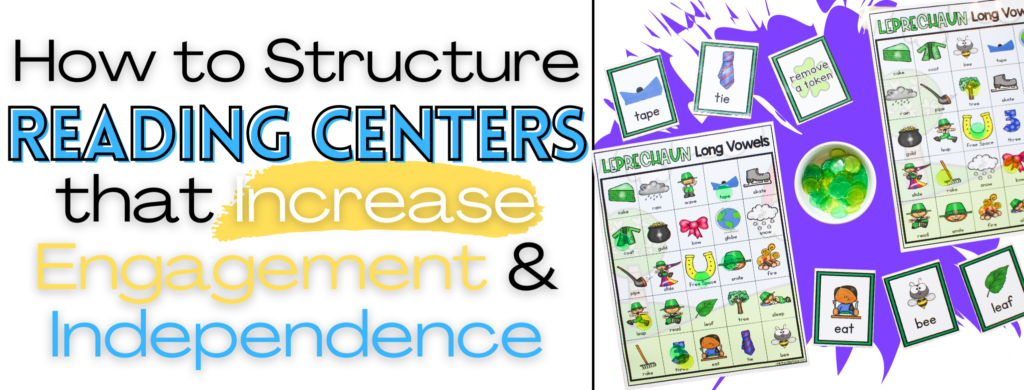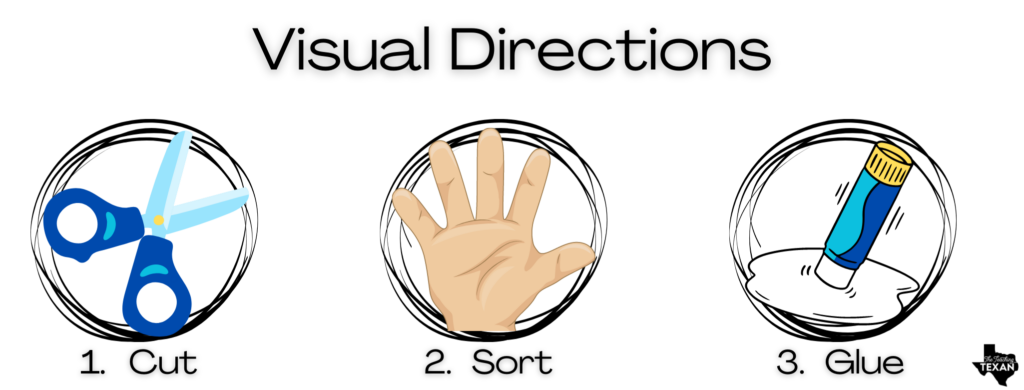How to Structure Reading Centers that Increase Engagement and Independence in Kindergarten
If you’ve been around here for a while, you know that I‘m a HUGE proponent of reading centers and how great of a way they are for promoting reading skills, independence, and engagement. (And… if you’re new here, welcome!)
Yes, even in Kindergarten, we can structure our centers in a way that provides an opportunity for students to practice reading skills while working independently and/or collaboratively with peers.

Below are some of my top tips for how to structure reading centers that increase engagement and independence – and free you up to work with small groups.
NUMBER 1 – Have clear instructions and expectations for your centers. What do students do when they finish work? What do they do if they have a question while you’re working with a small group? What do they do if they need more materials?
These are all things we have to consider so we can create routines and expectations surrounding them so that (1) students can keep working and (2) you experience less interruptions while working with small groups.
And… here’s a pro tip. If you’ve got a center that has multiple steps or might be confusing for students, go ahead and save yourself some gray hair and use visual instructions. What are visual instructions? I keep these simple and try to use a word or two accompanied with a simple picture that shows step by step (ex: 1. cut (with a picture of scissors), 2. sort (with a picture of a hand), 3. glue (with a picture of a glue stick)).

NUMBER 2 – Don’t use centers to teach new material. Centers are not the time for students to try out new skills that you haven’t taught, yet. This is a recipe for confusion and frustration for kids. Make sure ALL of your centers reinforce previously taught skills.
NUMBER 3 – Keep your centers hands-on. Kids at this age need a tactile experience and engaging more senses helps kids learn at their best and better retain information. This doesn’t have to be crazy (unless you like crazy, then do you for sure) but can include magnetic letters, cutting/gluing activities, fun markers/pens, plastic tweezers, etc.
Number 4 – Hold students accountable. This one is huge, y’all. Students need to know that you will be “checking in” on what they accomplished during centers. I like to pop-up from my small group reading table to circulate as students start to clean up for the next center and check in with what they got done.
It’s simple, but so effective and allows you to have quick conversations with students who – for whatever reason – did not give their best effort during the center.
Number 5 – Incorporate collaboration when you can. Kids are social creatures, so why not give them the time and space to engage with peers during centers? This is a natural way to let them talk while incorporating academic language and vocabulary.

Try teaching your students how to partner read or incorporate some fun learning games where students play cooperatively or competitively. If you’re needing games, I’ve got the perfect yearlong sets for you available for Kindergarten, First Grade, and Second Grade!
Are there a million other strategies to increase engagement and independence? Absolutely! But, starting small with a focus on or two things is my biggest recommendation. As you and your students start to experience success with these small steps, you can begin incorporating more strategies while you watch your literacy block transform into your favorite time of the day!

Love the reads especially on mapping for K kids! These are all awesome! I’ve been teaching kinders over 15 years now and even at sixty I too love learning!